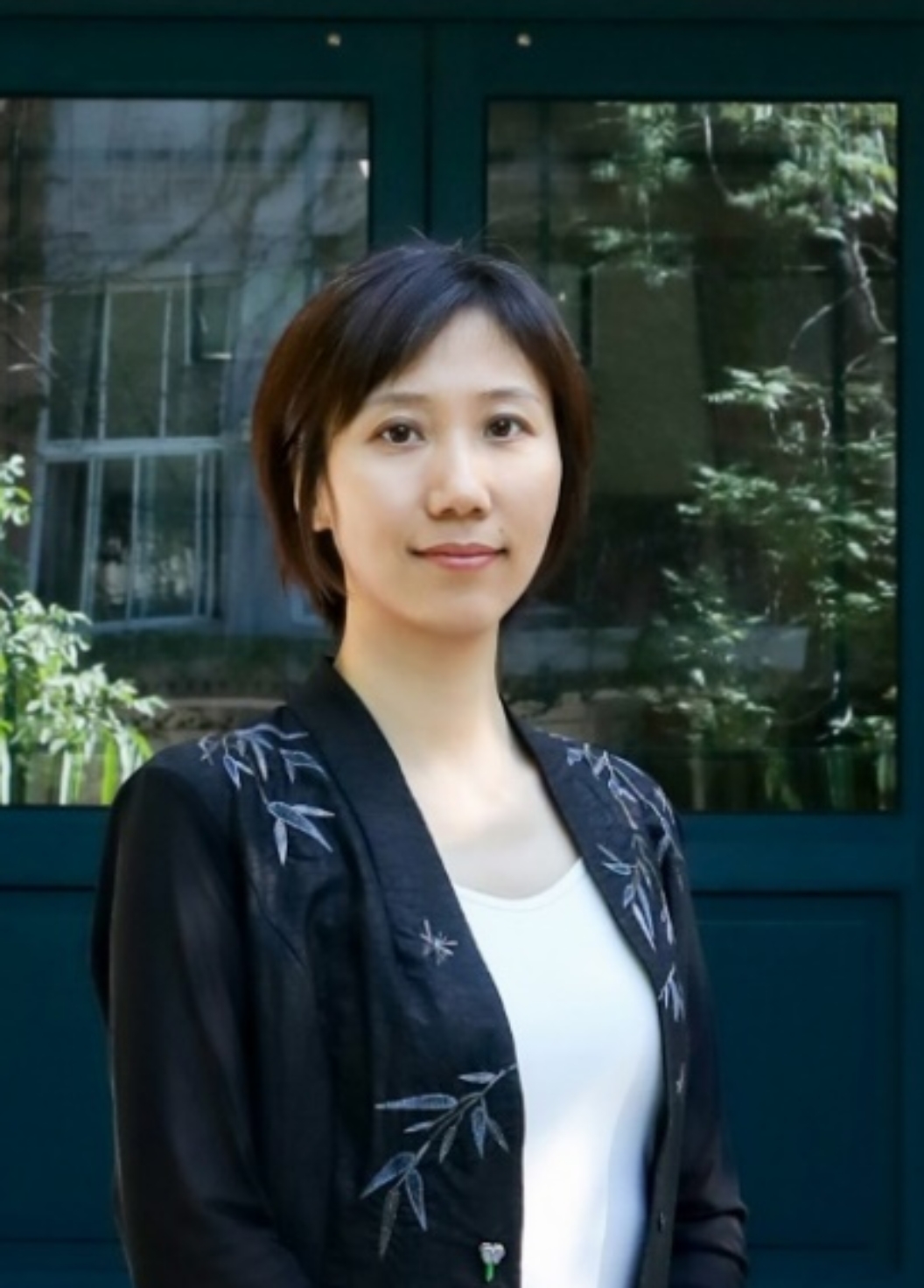Department of Physiology and Pathophysiology
Qiaoxia Zheng

Qiaoxia Zheng, Ph.D
Researcher, Department of Pathophysiology, School of Basic Medical Sciences, Peking University Health Science Center
Contact information
https://sbms.bjmu.edu.cn/jsdw/bssds/Qiaoxia_Zheng.html
https://physiology.bjmu.edu.cn/kxyj/js/c9bb60b34151493bbb3744781fc769dd.htm
Experience
B.S.Xiangya School of Medicine, Central South University (2004-2008)
M.S.Institute of Zoology, Chinese Academy of Sciences (2008-2012)
Ph.D.Peking University (2013-2018)
Assistant Researcher, Institute of Biophysics, Chinese Academy of Sciences, 2018-2022
Associate Researcher, Institute of Biophysics, Chinese Academy of Sciences, 2023-2024
Researcher, Department of Pathophysiology, School of Basic Medical Sciences, Peking University Health Science Center, 2024-Present.
Research Directions
spatiotemporal calcium signaling and its role in the pathophysiological functions of organelles
Calcium ions (Ca²⁺), as multifunctional secondary messengers, regulate a variety of physiological processes. Ca²⁺ signaling in living organisms is highly diverse, with significant spatiotemporal variations in local concentrations and dynamics across different tissues, organs, cells, extracellular environments, cytoplasm, and various organelles, as well as their localized microenvironments. Ca²⁺ signals are transduced through Ca²⁺-binding effector proteins or by phosphorylating downstream molecules via various Ca²⁺-dependent and Ca²⁺/calmodulin-dependent protein kinases (CDPKs or CaMKs). Ca²⁺ signaling is highly dynamic and exhibits complex spatiotemporal distribution patterns. In resting cells, a steep transmembrane [Ca²⁺] gradient of tens of thousands of times is established between the cytoplasm and organelles such as the endoplasmic reticulum and lysosomal membranes. The formation of these transmembrane concentration gradients relies on the precise regulation of Ca²⁺ channels, pumps, and exchangers. Due to the actions of these Ca²⁺ regulatory proteins, unique Ca²⁺ signaling submicrodomains are formed during the transmembrane influx and efflux of Ca²⁺. These localized Ca²⁺ signaling submicrodomains serve as critical sites for the function or activation of many proteins, enzymes, and kinases. Our group focuses on spatiotemporal Ca²⁺ signaling, exploring the dynamic changes of Ca²⁺ in specific nanodomains within the endoplasmic reticulum, lysosomes, cell membrane, mitochondria, and other intracellular localized spaces, as well as their roles in physiological and pathological processes.
Our recent discoveries have been published in leading journals such asCell(2016, 2022, which was awarded as one of the "Top 10 Advances in Life Sciences in China for 2022."),Molecular Cell (2025), Development Cell, Journal of Cell Science, Nature Communications, Hypertension.
Publications
(1)Qiaoxia Zheng#, Huan Zhang#, Hongyu Zhao, Yong Chen, Hongzhining Yang, Tingting Li, Qixu Cai, Yingyu Chen, Youjun Wang, Mingjie Zhang, and Hong Zhang.Ca2+/calmodulin-dependent protein kinase II β decodes ER Ca2+ transients to trigger autophagosome formation.Molecular Cell. 2025, Feb 6;85(3):620-637.e6.
(2)Qiaoxia Zheng#, Yong Chen#, Di Chen, Hongyu Zhao, Yun Feng, Quan Meng, Yan Zhao, Hong Zhang. Calcium transients on the ER surface trigger liquid-liquid phase separation of FIP200 to specify autophagosome initiation sites. Cell. 2022, 185(22): 4082-4098
(3)Di Chen#, Qiaoxia Zheng, Long Sun, Mingming Ji, Yan Li, Hongyu Deng, Hong Zhang. ORF3a of SARS-CoV-2 promotes lysosomal exocytosis-mediated viral egress. Development Cell. 2021, 56(23): 3259-3263
(4)Jianwei Li#, Caizhi Liu#, Yuheng Li, Qiaoxia Zheng, Youjia Xu, Beibei Liu, Weijia Sun, Yuan Li, Shuhui Ji, Mingwei Liu, Jing Zhang, Dingsheng Zhao, Ruikai Du, Zizhong Liu, Guohui Zhong, Cuiwei Sun, Yanqing Wang, Jinping Song, Shu Zhang, Jun Qin, Shukuan Ling, Xianhua Wang, Yingxian Li. TMCO1-mediated Ca2+ leak underlies osteoblast functions via CaMKII signaling. Nature Communications. 2019, 10(1589): 1-14
(5)Fujian Lu#, Jianwei Sun#, Qiaoxia Zheng, Jinghang Li, Yuanzhao Hu, Peng Yu, Huifang He, Yan Zhao, Xianhua Wang, Shengyuyang, Heping Cheng. Imaging Elemental Events of Store-operated Ca2+ Entry in Invading Cancer Cells with Plasmalemmal Targeted Sensors. Journal of Cell Science, 2019,132(6): 1-10
(6)Jingjing Ye#, Qiaoxia Zheng, Shijia, XueQiao, Yangpo Cao, Chunling Xu, Lin Weng, Lifang Zhao, Yingyu Chen, Jian Liu, Tianbing Wang, Heping Cheng, Ming Zheng. Programmed Cell Death 5 Provides Negative Feedback on Cardiac Hypertrophy Through the Stabilization of Sarco/Endoplasmic Reticulum Ca2+-ATPase2a Protein. Hypertension. 2018, 72(4): 889-901
(7)Qiaochu Wang#, Qiaoxia Zheng#, Haiyan Tian#, Bing Zhang#, Xiaoling Li#, Yuxiu Yang, Jie Yu, Yang Liu, Hao Chai, Xi Wang, Zhongshuai Sun, Jiu-Qiang Wang, Shu Zhu, Fengli Wang, Maojun Yang, Caixia Guo, Heng Wang, Qingyin Zheng, Yang Li, Quan Chen, Aimin Zhou, Tieshan Tang. TMCO1 Is an ER Ca2+ Load-Activated Ca2+ Channel. Cell. 2016, 165(6): 1454-1466
(8)Yong Liu#, H Cheng, Y Zhou, Yushan Zhu, R Bian, Y Chen, C Li, Qi Ma,Qiaoxia Zheng, Quan Chen, Dahai Zhu. Myostatin induces mitochondrial metabolic alteration and typical apoptosis in cancer cells. Cell Death & Disease. 2013, 4(e494): 1-11
(9)Lei Liu#, Du Feng#, Guo Chen, Ming Chen, Qiaoxia Zheng, Pingping Song, Qi Ma, Chongzhuo Zhu, Rui Wang, Wanjun Qi, Lei Huang, Peng Xue, Baowei Li, Xiaohui Wang, HaijingJin, Jun Wang, Fuquan Yang, Pingsheng Liu, Yushan Zhu, Senfang Sui, Quan Chen. Mitochondrial outer-membrane proteinFUNDC1mediateshypoxia-inducedmitophagyinmammaliancells.NatureCellBiology. 2012, 14(2): 177-185
(10)Yanmin Huang#, Jianguo Cui, Qiaoxia Zheng, Chun Zeng, Quan Chen, Aimin Zhou. 6- Hydroximino-4-aza-A-homo-cholest-3-one and related analogue as a potent inducer of apoptosis in cancer cells. Steroids. 2012, 77(8-9): 829-834
Position available
Postdoc and graduate students

